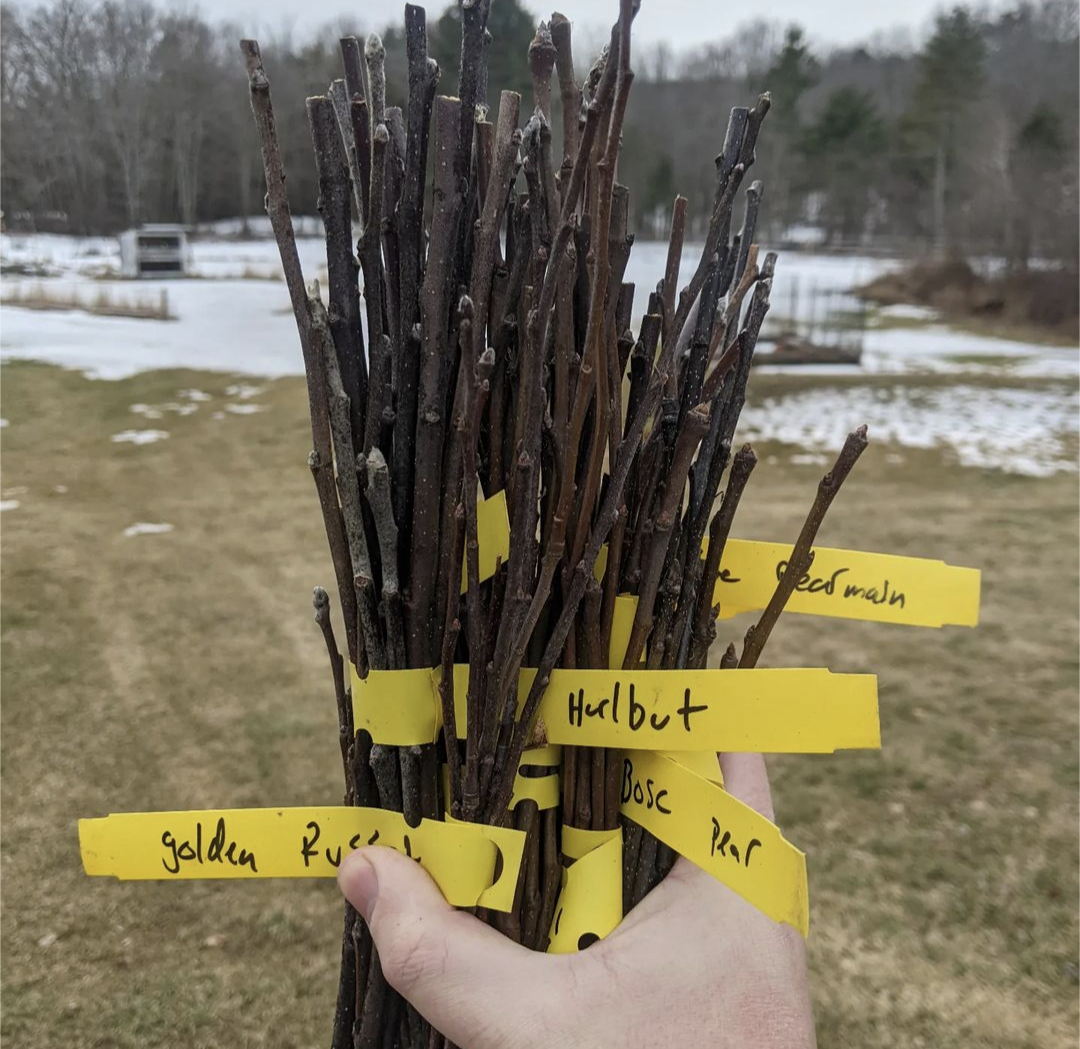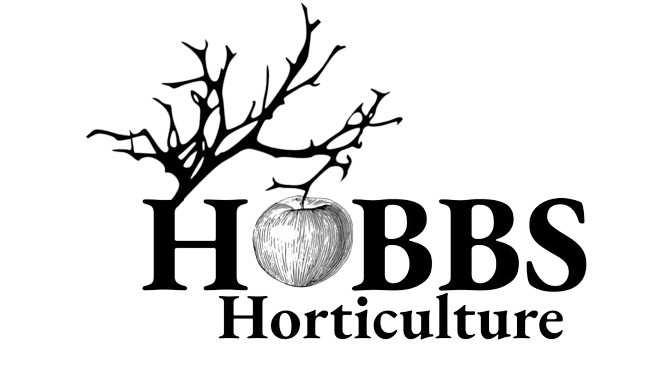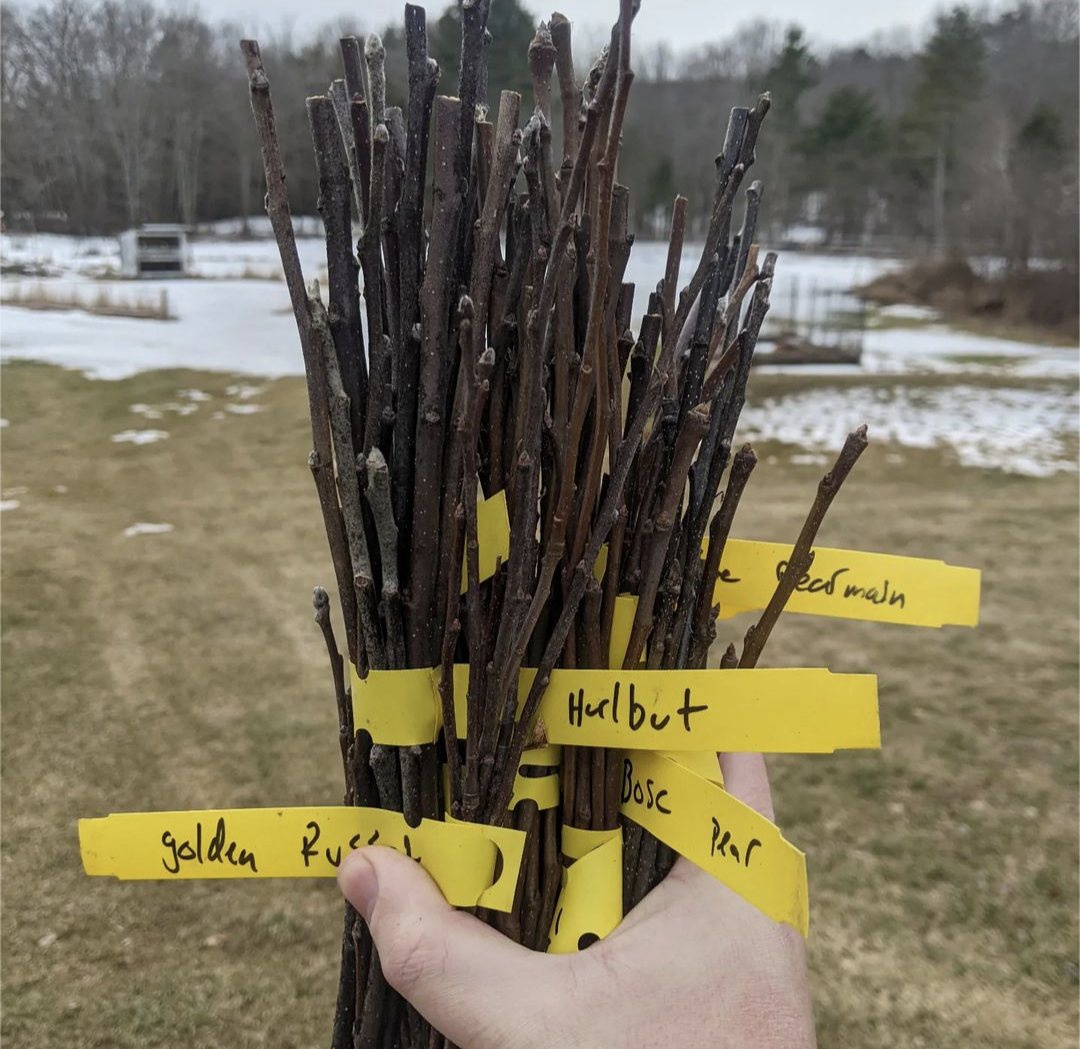Hobbs Horticulture
Pear scion
Pear scion
Couldn't load pickup availability
~8 in. cutting for grafting to pear rootstock.
All scions will be enough to do at least 2 grafts. Diameter varies depending on variety and growth habit. If we only have smaller scions available, we will send 2.
Bartlett
Seedling found in Aldermaston, England. Introduced to the U.S. in the late 1700s. The most widely planted and well known of all pears in the U.S. Large greenish-yellow classic oblong pear-shaped fruit; very good quality. Full reliable annual crops. Vigorous long-lived tree, precocious. Susceptible to fireblight. (Zone 4)
Bosc
Seedling introduced by Van Mons, Lourain, Belgium, 1807. Long-necked fully russetted fruit. Distinctive sweet rich spicy buttery flavor. White flesh. Large vigorous, tree annual bearer of huge crops. Good pollinator for other varieties. (Zone 4)
Magness
Soft, juicy dessert pear of great fresh eating quality. Introduced by the USDA in the 1960's. Its parents are Comice and Seckel, both great pears. Medium to large slightly russeted fruit, yellow when ripe. Very disease resistant, especially fire blight. Ripens beautifully on the tree. Needs a pollinator. (Zone 5)
Moonglow
A modern pear cultivar selected for flavor and fireblight resistance. Developed by the USDA and released in 1960. Very vigorous, precocious and productive. The fruit is large and attractive. The green-yellow skin is blushed with a deep pink, and the white flesh is soft and juicy. Recommended to be stored for six-eight weeks to reach full flavor.
Seckel
Seedling tree found near Philadelphia in the early 1800s. Many peoples favorite pear juicy and spicy. Small fruit is russeted yellow-brown often with deep red blush. Eat ripe off the tree. Very productive annual bearing tree, easy to grow. Scab and fireblight resistant. (Zone 4)


